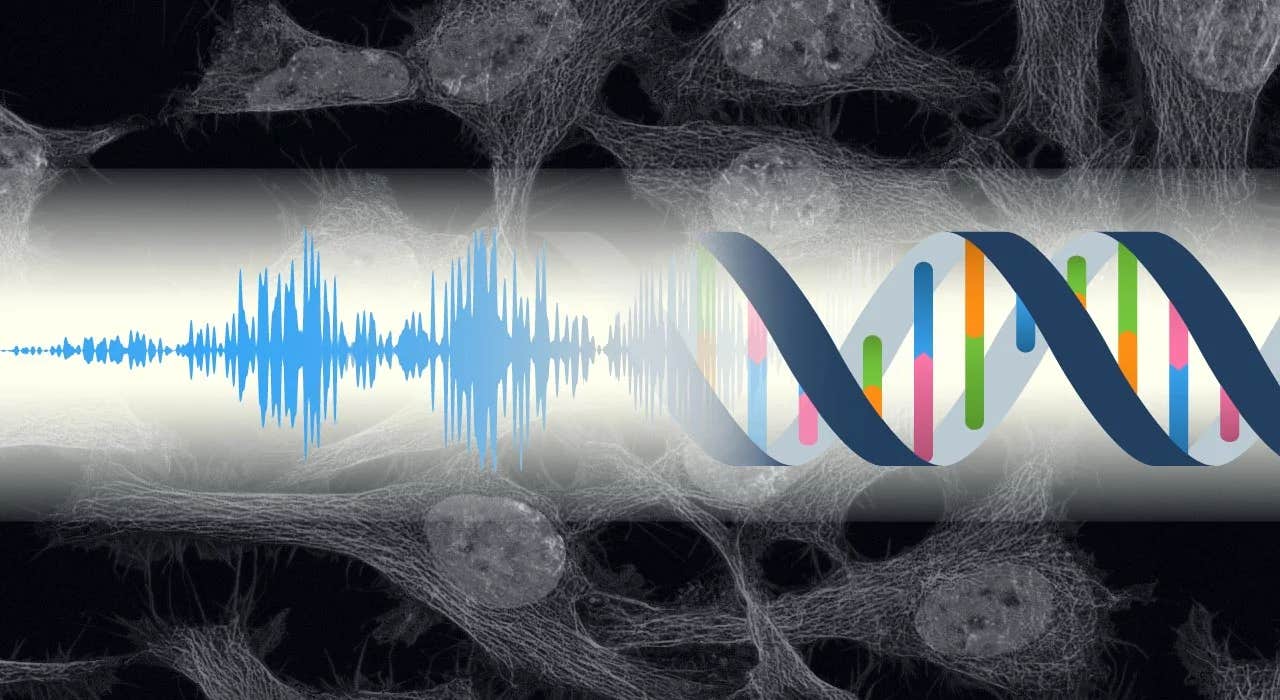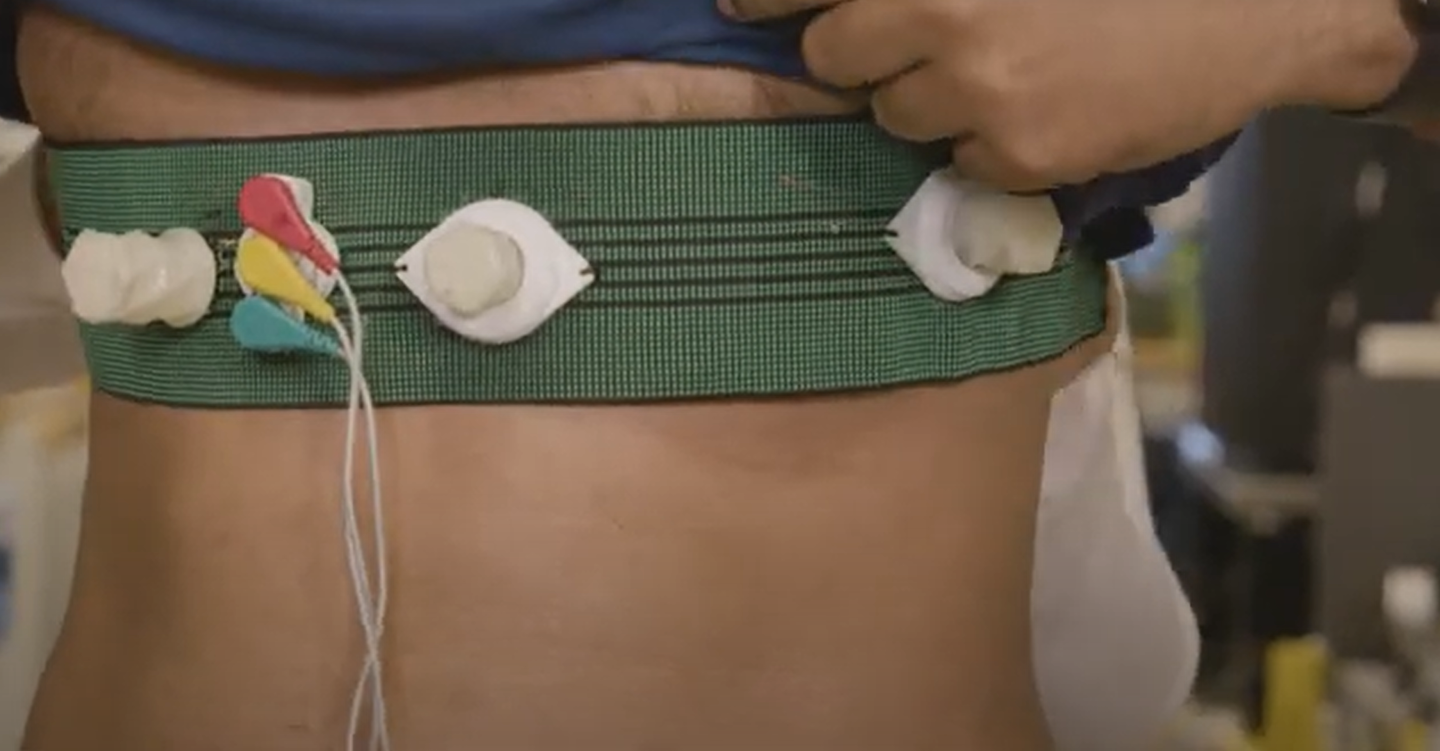New research finds that cells detect and react to sound waves
Sound doesn’t just reach your ears. New research shows sound waves can change gene activity and cell behavior deep inside your body.

Cells react to sound waves like they do to chemicals, with new research showing gene-level responses and future medical potential. (CREDIT: KyotoU / Kumeta lab)
The power of sound reaches far beyond your ears. While you're used to hearing sound through music, voices, or noise, your body is also quietly listening—at the cellular level. Recent research shows that even individual cells can detect and react to sound waves. This surprising discovery could change how we approach health, medicine, and our understanding of life itself.
Sound is more than just noise. It's a mechanical wave made of pressure changes that travels through materials like air, water, or tissue. You usually hear sound through your ears, but scientists now believe your cells also feel these waves.
In a groundbreaking study, researchers from Kyoto University designed a system that let them expose living cells directly to sound waves. Using a vibration transducer and a cell culture dish, they emitted sounds at different frequencies and tracked how the cells responded.
Published in the journal, Communications Biology, they focused on three types of acoustic patterns: a low tone at 440 Hz, a high tone at 14 kHz, and white noise. The pressure level was kept around 100 pascals—a strength similar to natural sound pressure inside body tissues.
They studied murine myoblasts, a type of mouse cell that can become muscle tissue. These cells were ideal for the study because they had previously shown sensitivity to sound in earlier experiments.
What they found was stunning: After just two hours of exposure, 42 genes had changed their activity levels. After 24 hours, that number jumped to 145. These changes weren’t random. The genes affected were tied to things like stress response, cell migration, and fat cell development. This proves that cells can recognize and react to sound, just like they do to chemical or physical cues.
Different genes responded to sound in different ways. Some turned on briefly and then went silent. Others stayed active for hours. The researchers called these "spiked" and "triggered" gene responses. Spiked genes had a short, sharp reaction. Triggered genes showed a slow but long-lasting response.
Related Stories
This kind of reaction is similar to how cells behave when exposed to hormones or growth signals. For example, when a hormone enters the body, it might trigger lasting changes, while a burst of growth factors may cause only a short response. Sound seemed to be capable of doing both.
One gene, in particular, called Ptgs2 (also known as Cox-2), stood out. It is usually involved in inflammation and healing. When the cells heard sound, this gene got activated fast and helped kick off other changes in the cells. Scientists discovered that this response needed a protein called focal adhesion kinase (FAK), which helps cells detect mechanical changes.
Another major finding was how sound blocked the development of fat cells. In this study, sound waves were able to stop pre-fat cells from maturing into full fat cells. That could open new doors in obesity treatment or body fat management, all without drugs or surgery.
Inside the body, sound doesn’t just travel through air. It can also move through bone, muscle, and other soft tissues. This internal sound environment is more complex than what you hear outside.
For example, researchers have found that even without touching the body, sound can travel through soft tissues. One study on sheep showed that a loud sound could reach a fetus in the womb with only a 5-7 decibel drop in strength. That means a pressure of about 2 pascals was still active deep inside the body.
But that’s just the beginning. When someone moves or exercises, the pressure transmitted through tissues can reach 400,000 pascals. That’s thousands of times stronger than everyday noise. These forces may help explain how physical activity shapes bone, muscle, and fat.
Despite how often our tissues experience sound-like pressure, science hasn't explored how it affects cells—until now. This study proves that even modest pressure from sound can lead to clear changes at the genetic level.
The idea of using sound to change cells isn’t just science fiction anymore. Because sound is non-invasive and doesn’t leave a mark, it could become a powerful tool for treating disease. Unlike surgery or drugs, sound doesn’t need to cut, burn, or inject. That means fewer risks, faster recovery, and wider use.
Researchers also identified around 190 genes that respond to sound. Some were tied to how cells stick together or migrate, while others were linked to processes like apoptosis (cell death) or blood vessel growth. These results suggest that acoustic waves could guide how tissues form, repair, or respond to injury.
It also raises a bigger question: If our cells are always listening, what is our environment telling them? Everyday sounds, background noise, or even music could be influencing our biology in subtle but powerful ways.
Corresponding author Masahiro Kumeta shared, "Since sound is non-material, acoustic stimulation is a tool that is non-invasive, safe, and immediate, and will likely benefit medicine and healthcare."
This research also challenges the long-held belief that only ears and brains process sound. Clearly, the story is more complex. Your whole body might be wired to hear, in its own quiet way.
Note: The article above provided above by The Brighter Side of News.
Like these kind of feel good stories? Get The Brighter Side of News' newsletter.



